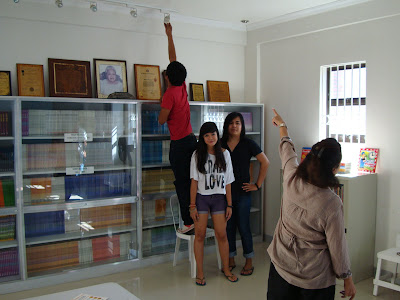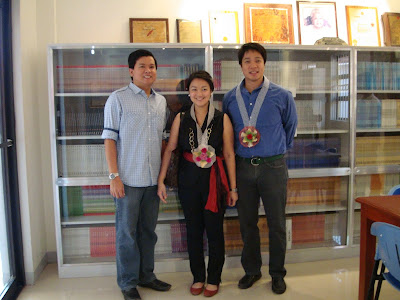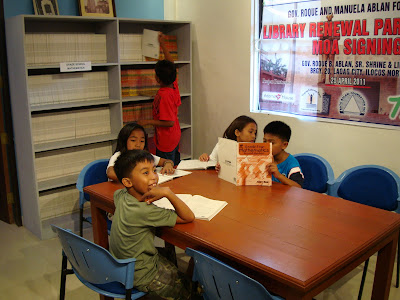My grandfather, Roque Blanco Ablan, Sr., was a World War II hero. He was provincial governor of Ilocos Norte during the Japanese occupation and he was one of the few local public officials not surrender to the Japanese. Instead he transferred the seat of government from Laoag City to the mountains of Vintar and Solsona. He continued serving as local chief executive and was even allowed by Pres. Quezon to issue war notes (some are kept at the Bangko Sentral). In one of his encounters with the enemy, my lolo was separated from his unit. When the dust settled, he was nowhere to be found. Historians believe that he was killed by the Japanese. My lola, Manuela Ravelo Ablan, searched for my lolo's remains throughout Northern Luzon after the war to no avail.
For his heroism, my lolo was awarded the Medal of Valor (posthumously) by Pres. Ferdinand E. Marcos. A shrine was built by the National Historical Institute in Brgy. 20, Castro Ave., Laoag City, Ilocos Norte, to commemorate his bravery and remind others not to forget about the many lives that were sacrificed so that we can enjoy freedom and democracy.
 |
| The Gov. Roque Ablan Shrine in 2006 |
In 2009, my Dad spoke with the people over at the NHI (now NHCP) to rebuild and fix the Roque Ablan Shrine to make it into a public park and to house a mini-museum. Construction soon followed.
 |
The new Gov. Roque B. Ablan Sr. Shrine was completed in mid-2010 and it was inaugurated in August of the same year. The Gov. Roque and Manuela Ablan Foundation (GRAMAF) was tasked to occupy the museum and fill it with my lolo's memorabilia.
Unfortunately, we hit a snag because most of my lolo's memorabilia got lost or destroyed during the dismantling of the old shrine. We didn't have enough things to display in the museum.
Luckily, though, we met Quintin Pastrana of Library Renewal Partnership (LRP) through my sister Annette, and the idea of having a museum/library came into play. It would be great, we thought, if the community could visit the shrine not only to remember the province's heroes, but also to learn. I mean aside from the provincial and city libraries, which are both small and cramped, there isn't any other place for students to continue studying after school.
And so in February 2011 we partnered up with Quintin's group, who had opened more than 50 other libraries prior to us (mostly in the Visayas), and readied the museum to become a community library.
LRP acted fast. Within a few weeks, I was at Bato Balani Foundation picking up over 40 boxes of textbooks. From Manila I brought the books all the way up to Laoag.
LRP donated all kinds of books. We had pre-school books for little kids.
We had textbooks in Math, Science and English for elementary students.
We had textbooks for high school students.
We also had a collection of encyclopedias, college textbooks and fiction books.
 |
| My sister Annette putting in the finishing touches before the opening. |
 |
| GRAMAF Scholars volunteer to man the library. |
 |
| With Bato Balani Foundation Exec. Dir. Ching Jorge and Quintin Pastrana |
 |
| Explaining to the media the rationale of the library |
Dad invited over NHCP Executive Director Ludovico Badoy to lead the ceremonial ribbon cutting.
As Executive Director of GRAMAF, I signed the Memorandum of Agreement with Ching Jorge of Bato Balani Foundation.
Dir. Badoy officially turning over the shrine complex to GRAMAF.
Quintin Pastrana explaining the LRP Program. Another LRP sponsored library might be sponsored in Solsona. Another one just opened in Adams.
Right after the ceremony, we let kids come in and start reading the books.
This project wouldn't have been materialized without the help of my Dad, the National Historical Commission of the Philippines and Library Renewal Partnership.
The library is open 8am to 5pm, Mondays to Fridays. It is open to the public. Here are the house rules:















































